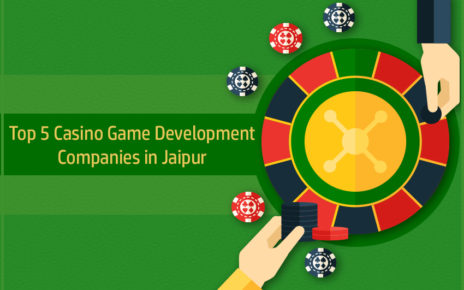Talk about the next big thing and the image it creates is like a quantum step up or an inundating tidal force.
The reality is that in the software you find incremental progress and then, at some point, the accumulation of good features, ironing out of kinks and affordability could help to make it mainstream.
One can say something of this kind is happening in the field of Machine Learning. That Microsoft, Google, and Amazon are offering ML as a service is equivalent to opening floodgates to even more widespread use, and implementation is a big enough thing.
Back in the infancy days of big data, it was considered as a colossus difficult to handle. Years later it is easily handled and you have big data services everywhere. It would not be surprising to see the same thing happening in ML. It is interesting to speculate.
Machine learning consulting involves providing expert guidance and advice to businesses and organizations seeking to leverage the power of machine learning in their operations. As machine learning continues to advance, companies are increasingly recognizing the value of utilizing these techniques to extract valuable insights from their data and optimize various processes. Machine learning consultants possess deep knowledge and expertise in areas such as data analysis, algorithm development, model training, and deployment strategies. They work closely with clients to understand their specific needs, design custom machine learning solutions, and help implement them effectively. By partnering with machine learning consultants, businesses can gain a competitive edge, improve decision-making, and unlock the full potential of their data-driven initiatives.
Software becomes personalized
Software is pretty smart these days, a far cry from what you got in buggy packages just five to ten years ago. Still, in a way, software packages can be dumb. They work the same way for all users.
Now image ML drenching the software. Now you have an ac software package that learns what its “Master” does and how he uses it, the frequent features and steps that he goes through, and the results he drives.
The software keeps learning and maybe takes over part of the processes. The software user could simply verbally instruct the software to do the “usual” or to find a solution to a problem. There is no reason why this should not be possible.
Already Facebook, Instagram, and Amazon are making good use of machine learning to process user data and offer personalized recommendations.
The trend of intelligent owner aligned devices is already showing in smartphones that listen, talkback, and carry out orders of owners.
This is happening but the big thing in ML will be when the device can link contextual elements and be deeply inclusive. It will be even bigger when the machine develops sensitivity and discretion but that day is far in the future.
Healthcare
Personalized software would seem trivial compared to the tremendous benefits to global health, patient care, disease control, and emergency response that ML brings to healthcare.
Admittedly ML feeds off gargantuan chunks of healthcare data and refining its precision and accuracy of diagnosis. A burgeoning population explosion and lack of doctors give ML a big boost in healthcare.
ML can now do a lot of things and it will be capable of doing still more in the future. It can, for instance, distinguish anomalies with more accuracy and even carry out unattended diagnosis from lab reports and MRI/X-rays.
The big thing with ML is how it helps to arrive at a more accurate diagnosis, which is so crucial to precise treatment and prevention. ML runs the entire gamut from accelerating drug discovery to understanding genetic disorders.
The big thing would be for ML to lead to reductions in the cost of healthcare. Google’s ML algorithm can detect tumors from mammograms and Stanford is using ML to detect cancer in early stages.
Financials
If health is important for individuals, financials are important for the world at large.
ML developers are working together with financial institutions to come up with ML-powered solutions that will greatly boost functioning in this core sector.
ML will play a bigger role in banking, finance, and insurance in credit rating, automatic scrutiny of loan applications, risk appraisals, and prevention of fraud.
If banks, insurance companies, and lenders have not already adopted ML it is time to get ML developers to introduce the tech into their operations.
Apart from customer side operations ML also helps for the next big leap as regards employees and internal operations.
ML and HR
Ml has already made inroads into HR operations. It will go further in helping HR experts to scrutinize applications and create a more in-depth profile of candidates by studying not only their resume but also their faces.
This type of analysis helps HR identify individuals who will best fit into the company culture and, from the existing employee set, identify those likely to progress or likely to resign.
ML algorithms can be put to good use to distribute workload and allocate work.
It can keep track of external developments like a booming economy that will likely lead to employees finding greener pastures elsewhere and the difficulty in finding recruits.
ML, big data, advertising, marketing
ML is already making inroads into advertising and marketing as can be seen from the success of programmatic advertising the world over.
Marketing leverages it as can be seen from sites like Amazon. The big thing in ML is that marketers will benefit from real-time analysis of streaming big data and gain predictive capabilities that will help them to design a campaign for success and even predict its outcome.
The effort is worth it since 91% of customers prefer personalized recommendations and 83% will share data if they are promised personalized experiences.
That is not so surprising or a big thing but one thing that will prove truly big is the use of recurrent neural networks, AI, and ML to create content or design ads or script a storyline for a movie or a Netflix series.
Each episode will be a guaranteed hit.
Image search/recognition
Work is already in progress and Facebook and Instagram already have a degree of capability of face recognition.
Search engines can find and match images. However, given the so many different variables, ML in this segment is still work in progress kind of thing.
Travel
Travel will be easier than ever. You simply ask the smart assistant to recommend places according to parameters such as scenic vista, food choice, action, or budget.
You get detailed recommendations with no need to worry about schedules, itineraries, and bookings.
Agriculture
This is truly one area where ML can be life-changing. Agriculture depends on quite a few variables such as soil, market demand for a particular product, climate, and availability of inputs.
ML has vast scope with the capability to predict the yield of crops and output from livestock. It can be used to enhance species breeding and selective genetic engineering.
ML yelps with analysis of leaves, with water management and soil management to give outputs about yields and crop quality.
Smart agriculture takes care of disease detection, weed detection pest control, and other threats that farmers must face.
You take the guesswork out of farming and you have assurance of outcomes. This can change the fortunes of farmers, help them from going bankrupt due to vagaries of weather, and propel a country on the path of prosperity.
Like healthcare, this is one segment that has immense scope and holds big promise for and from ML.
One thing to note from the foregoing is that Machine Learning is application-specific and requires specific work in one area to derive results.
The ML solution may make use of one or several types of neural networks like Sparse AE, Deep Belief Network, Restricted BM, or Markov chain to mention a few from over a dozen different types.
ML solutions may make use of various algorithms such as general minimization algorithms or steepest descent algorithms. ML could be supervised or unsupervised or reinforced.
The result is specific answers to specific questions, something that is quite rudimentary compared to what the human brain is capable of.
The next big thing of value in ML would be a development that has artificial general intelligence and of thinking like a human mind.



